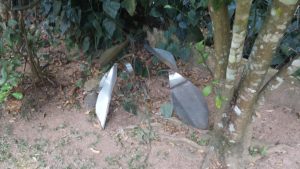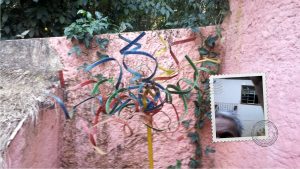Terapia Astrodinamica

Strategie e avvertimenti
sui problemi della mappa natale.
Da gennaio 2019 offriamo avvertimenti, strategie e azioni riparatorie su diversi “problemi astrologici”.
Contatto: max@power-relations.com
Logica e contesto:
Ifá e Astrologia (o, importanza della tua mappa natale anche se hai ifá)
di Max Sandor (traduzione di Oscar Marzorati)
Storicamente, sia Ifá arabo (“ifaya”) che Ifá europeo (“Geomantia”) erano collegati all’astrologia. Se ne conosce ancora un poco, con l’eccezione dei suoi strumenti matematici, il set di pianeti considerati e la Geomantia europea deterioratasi alcune centinaia di anni fa in una mera chiaroveggenza.
E dove sarebbe il problema? Non possediamo già sufficiente accesso al “piano cosmico? L’astrologia offre un campo non modificabile al gioco degli archetipi (Orishá) e spesso questo campo interferisce sostanzialmente con il gioco archetipico. È la parte fisica del gioco, in contrasto alla parte spirituale degli Orishá e Orí, l’io superiore.
Le informazioni a seguire si basano sulla diretta osservazione e procedimenti di me stesso, Max Sandor, Chris Melchior e Ed Dawson. Al momento, non esiste altro materiale di questo tipo disponibile, anche se il campo dell’Astrologia descrittiva è enorme e dettagliato.
Gli archetipi, che si esprimono attraverso gli esseri umani, sono come bambini che invadono un parco giochi. I giochi che incontrano cambiano la loro posizione in ogni momento e forniscono un grande circo, rendendo così il gioco più interessante e diversificato. Spesso, è vero, lo stesso “gioco” può applicarsi in svariate modalità distruttive e, anche se sappiamo come occuparci dei problemi degli archetipi, noi siamo gli “attori principali” e che necessitano fissare il “paesaggio” di base.
La cosa certa è che questo paesaggio è composto da una costellazione di pianeti al momento del concepimento e della nascita. Com’è possibile che questi pianeti così lontani possano influenzare la vita su sulla Terra? L’osservazione mostra che viene realizzata una COPIA della mappa planetaria ed installata all’interno del campo morfogenetico (dell’anima) di un’entità incarnata. Da lassù, aspetti di questa mappa, o progetto, saranno attivati in tutta la vita nelle varie situazioni e per tutta la durata. In questo modello non è perciò necessario che i pianeti abbiano un certo potere proprio, ma è la copia INTERNA della mappa che determina il suo funzionamento nella psiche dell’essere umano.
In contrapposizione agli Orishá, le forze dello Zodiaco sono atteggiamenti di base e, al massimo, mini copioni. Le forze si muovono in base alla tavola cosmica e non liberamente come gli Orishá. L’attivazione delle forze dello Zodiaco dipende INTERAMENTE dalla loro posizione geometrica rispetto ad altre forze di questo tipo. In un determinato periodo storico, solamente certe costellazioni sono possibili, e ciò limita notevolmente altre potenziali combinazioni per un solo essere umano.
L’astrologia classica è un’arte descrittiva. È utile per capire apparenti modelli di comportamento immutabili ma non è capace di cambiare alcuna caratteristica del sistema astrologico, e questo è il punto in cui siamo. Ciò che abbiamo cominciato a fare in modo sistematico è disattivare aspetti limitanti e in alcuni casi attivare modelli positivi. Attenzione, l’intero fenomeno delle mappe planetarie che agiscono sul comportamento umano è un fenomeno seriamente limitante ed anche gli aspetti positivi dovrebbero essere sostituiti perciò in breve tempo e attraverso rapide e decise azioni. Oltre una generica psico-astrologia laboriamo con effetti di risonanza, con sedute individuali, attraverso un allineamento, o tramite una rappresentazione fisica (skywork). Similarmente, possiamo trasformare un’interna opposizione negativa in una costruttiva cooperazione.
Altre possibili azioni, in alcuni casi benefiche, includono il mutamento dell’orizzonte (come ruotare la mappa, per esempio), modificando così il punto di vista globale (mettendo l’ascendente nella posizione corretta). Per persone avanzate, possiamo desensibilizzare anche la mappa intera e la sua costruzione iniziale. A tal fine, è necessario interferire con l’ultimo Bardo (area tra le vite) della persona.
Per mantenere determinate “abilità sociali” è consigliabile avere familiarità con gli archetipi astrologici e di base e sapere come azionarli, se si desidera, PRIMA di intercettare le funzioni di una mappa natale. In generale, una diretta conoscenza e familiarità con le forze dello Zodiaco forniscono un salto quantico nell’interazione sociali.
Grazie a nuove possibilità che nascono nell’attivazione consapevole delle forze dello Zodiaco, testimoniamo il sorgere di un paradigma affascinante che ci permette di capire, trattare e curare modelli di comportamento umani. Questo nuovo paradigma non sostituisce l’astrologia tradizionale o l’astropsicologia. Rappresenta invece una soluzione pratica a specifici problemi comunemente riscontrabili nel “planetario” di una persona.
Resta da enfatizzare che la nostra meta principale consiste nel TRASCENDERE tutti i modelli archetipici al fine di restaurare azioni pan-deterministiche dell’Essere stesso in accordo con le forze dello Zodiaco, che spesso si dimostra essere un primo passo necessario.

 Sculpture: Ossayin 21st Century (Sandor, 2007)
Sculpture: Ossayin 21st Century (Sandor, 2007)
